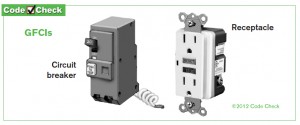Because of the high cost of copper, electricians began using aluminum wiring between 1968 and 1974.
Determining that a house is wired with aluminum is not as easy as it may seem. You might start with determining if the electrical panel was installed during the period in which solid aluminum wiring could have potentially been used. After that only a seasoned home inspector or a certified electrician should check to see if the wiring actually is solid aluminum and if that wire has caused heat damage.
To start, you must look at the cut end of the wire to determine if it is a solid or coated wire. Silver wiring is not necessarily aluminum. It could be copper wire with a tin coating. Similarly, copper wire may not be what it seems. Aluminum wiring was sometimes coated with copper to prevent a chemical reaction between the aluminum wire and its mounting hardware.
The main concern is aluminum wire alloys, produced in the period 1964 to 1981, expanded more than copper wire when they got hot and shrank more when they got cold. This continual expansion and contraction caused loose connections, overheating and eventually house fires.
What should I do if my house has aluminum wiring?
The best solution is to completely rewire the home. This can be very expensive, so there is a code approved alternative. Copper pigtails (a short copper wire) can be connected to the aluminum wires, creating a bond between the approved devices and the wire. This bond will stay secure and prevent overheating.
There are two devices approved to bond the copper pigtails to the aluminum wire. The best is a COPALUM connection which is a form of cold welding and can only be performed by a trained and certified electrician using specialized tools. This is a very costly process. The next best is AlumiCon connectors which are a newer, simpler and less costly alternative, to COPALUM. These devices also must be installed by a licensed electrician. Amateur installation of AlumiCon connectors is not approved because improper bonding of the wire to the connector can cause serious overheating.
Never let anyone attempt to connect the copper pigtails to aluminum wire with a wire nut. This method has been extensively used in the past. It will absolutely cause overheating and maybe a house fire!
Aluminum wiring is an issue that should be addressed immediately. Start by calling an ACI Certified Home Inspector for analysis.
![]() Doug Hastings
Doug Hastings
MN Home Inspector, Minneapolis & St. Paul
ASHI Certified Inspector, ACI
Kaplan University, Home Inspection Lead Instructor
![]() ‘Pops’ Rob Leslie
‘Pops’ Rob Leslie
Kaplan Professionals, Retired
‘Like’ Cities Inspection’s Facebook page for more great tips on things to watch for in your home!




